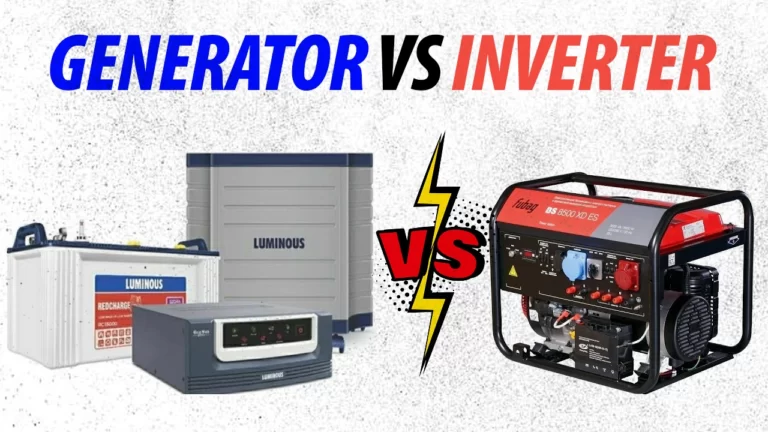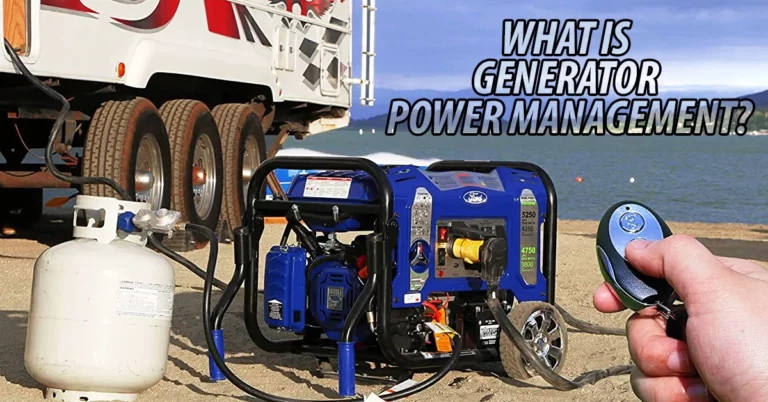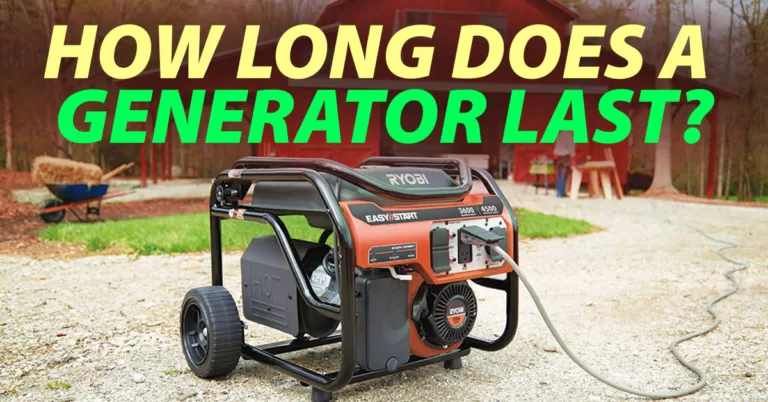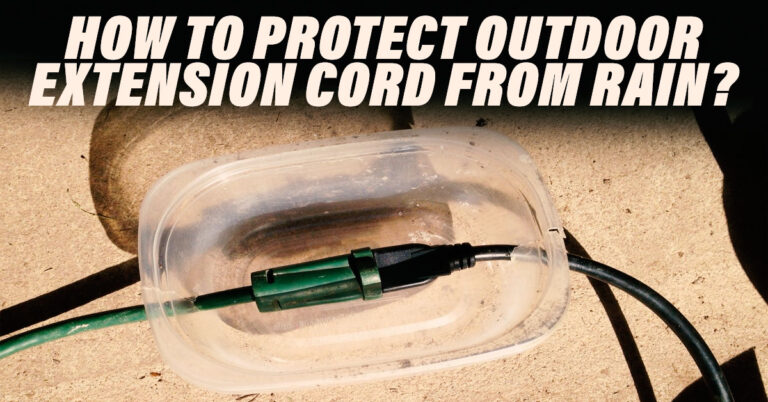How To Build A Generator Quiet Box
We all know that too much noise from vehicles and machines can be a big problem. If you have a generator, you’ve probably had trouble with the loud noise it makes. It might even bother your neighbours.
You can build a “quiet box” for your generator to deal with this noise. This quiet box makes the generator much quieter. You might be wondering How To Build A Generator Quiet Box for your home or workplace and as a do-it-yourself (DIY) project. Making a generator quiet box at home is easy and cheaper than buying one already made. You’ll use Mass Loaded Vinyl, Green Glue, wood, and Acoustic Foam. I’ll explain all the steps in detail on how to do it below.
Materials to Build a Soundproof Generator Enclosure
No matter if your generator is portable, inverter, standby, or manufactured by Duromax, Champion, Honda, or WEN, you’ll need the following supplies and instructions to build a quiet box for it:
Mass Loaded Vinyl (MLV)
Mass Loaded Vinyl, often called MLV, is a favourite soundproof material. It’s made of vinyl, lead, and barium sulfate. What’s great about MLV for soundproofing is that it doesn’t move or shake when sound hits it. It is frequently used to lessen vehicle noise in recording studios and home cinemas. When building a box to quiet down a generator, you put MLV on the inside walls. It stops sound from getting out, and it also stops vibrations that add to the noise.
Soundsulate™ 1 lb Mass Loaded Vinyl MLV, Soundproofing Barrier
Acoustic Foam
Open Cell Foam
Acoustic foam, especially open-cell, is another important material for quieting a generator box. Open-cell foam, like the stuff used in recording studios, is good at soaking up sound. Sound gets trapped in all the little spaces, turning into heat, making the noiselessly powerful. Although it doesn’t eliminate the noise, it does make it quieter. Open-cell foam has tiny holes, so air and moisture can penetrate it. This makes it softer and less solid compared to closed-cell foam. It’s a good choice for absorbing sound in a generator quiet box because it’s versatile and inexpensive.
JBER 12 Pack Acoustic Foam Panels
Closed-Cell Foam
Open-cell foam is the better choice for soaking up sound in this case, but it’s important to know about closed-cell foam, too. Closed-cell foam is about three times denser than open-cell foam, so it’s better at blocking deep sounds. However, it has some things that could be improved for this project. Closed-cell foam can block heat and gas, which is a concern when insulating a generator that makes heat and gas. Open-cell foam is the best choice for quieting a generator box.
Green Glue
Green Glue is a handy soundproofing product with two types: a sealant and a damping compound.
Sealant
The Green Glue sealant is gooey and never gets completely hard. This is useful for sealing gaps and stopping sound from escaping through tiny holes. It’s used to make a barrier so sound can’t go through cracks in stuff.
Green Glue Noiseproofing Sealant
Damping Compound
The Green Glue damping compound works differently. It spreads out the energy from sound so it doesn’t vibrate so much. Instead of sealing gaps, it’s used inside things to block sound from going from one surface to another. Putting it between two mass-loaded vinyl (MLV) layers in a generator box is good.

Wood Choice
When building the actual quiet box for the generator, you have two common options: plywood and medium-density fiberboard (MDF).
Plywood
Although plywood is not as sturdy as MDF, it doesn’t matter which material you choose for soundproofing because it is made of thin layers of wood that are glued together. It’s strong, long-lasting, doesn’t bend or crack easily, and is inexpensive. That’s why people often use it for making generator boxes quiet.
Baltic Birch Plywood
MDF ( medium-density fiberboard )
On the other hand, MDF is made from wood fibres glued together, so it’s dense, heavy, smooth, and even. MDF is stronger than plywood but costs more. One good thing about MDF is that it doesn’t break apart when you cut it, so it’s easier to work with. But it would help if you put a coating on it to stop it from getting wet because it can soak up moisture.
You’ll need extra things like a measuring tape, a saw for cutting stuff, regular glue, screws, nails, a hammer, a screwdriver, a small knife, and some ducting. It’s super important to measure carefully and build things correctly to make a generator silence box that stops noise.
MDF Wood Boards Sheets
How To Build A Generator Quiet Box: Step-by-Step Soundproofing Guide
Here’s a way to make your generator box quiet, which can help lower the noise from your generator when you use it, whether for camping or backup power at the whole house. This method doesn’t give you specific measurements because they change depending on your generator size. But it gives you a step-by-step plan for building it. It also tells you that making your own is cheaper than buying one already made, and you can find many DIY guides on the internet to help you along.
Measuring for a Generator Quiet Box Enclosure
The instructions below can be used to create a quiet box enclosure for your generator.
- Measure your generator’s height, width, and depth, making sure your measurements are bigger rather than smaller.
- By taking into account the width and depth, calculate the size of the lid (top piece). There is no need for a bottom because the silent box can be moved more easily without one.
- Each measurement should be increased by at least 2 inches to account for the materials and prevent errors.
- Generators produce heat, so add height and width to prevent damage and ensure airflow. Consider the added thickness from insulation and soundproofing and Measure cutouts for exhaust and cables.
- If you plan to use the enclosure for multiple appliances, adjust the measurements accordingly to ensure enough space.
For example, if your generator is 24 x 15 x 30 inches, increase the measurements to at least 26 x 17 x 32 inches.
Cutting Generator Box Pieces
The second step is cutting the pieces for your generator quiet box based on your earlier measurements. It’s best to use medium-density fiberboard (MDF) because it’s easier to cut and does a good job of blocking noise. You can use regular plywood if you don’t have MDF, but it might work better. Use a pencil and a set square to mark the measurements clearly on the fiberboard. Then, carefully follow your measurements and marks as you cut using a table or circular saw. To ensure everything fits properly, the main key to remember is to double-check your dimensions before cutting.
Generator Ventilation Holes
In this step, you must make holes in your generator box to release hot air. It can harm your generator and the box if it gets too hot inside. On the fiberboard, draw circles the size ( diameter ) of the required holes. Make one hole on the top piece and another on the backside. The hole near the generator’s exhaust pipe should be close to it, and the second one should be on a different side of the box.
These holes also work as handles to carry the box. It’s a good idea to put the top hole at the front and on one side and the exhaust hole on the other for better airflow. If you’re using soundproofing material, you can cut these holes after attaching the material.
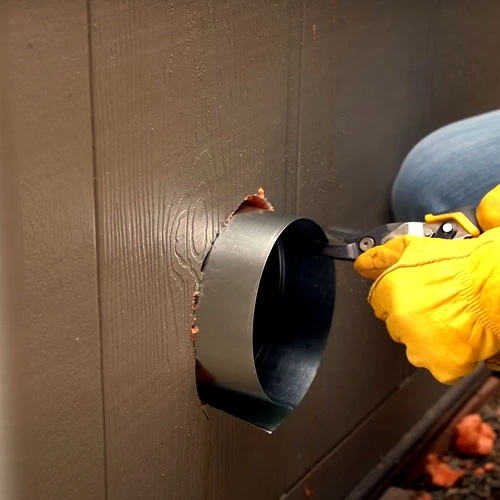
Not having enough ventilation can be risky, as it can harm your generator and the box. Consider adding a longer exhaust pipe for smaller boxes to send fumes outside. Some people use fans to help the air move and cool the generator, especially in smaller boxes. You might find an exhaust pipe made for your generator, or you can use materials like copper pipes that can handle the hot exhaust. Ensure the generator exhaust is sealed tightly to avoid fumes leaking. Your generator may require more holes for optimum cooling, depending on its size and how hot it gets.
Soundproofing with Mass Loaded Vinyl
To make your generator box quieter, add layers of sound-deadening material. Here are the steps to follow:
- Put the fiberboard pieces on the floor and attach Mass Loaded Vinyl (MLV) inside. You can use Green Glue damping compound, but it’s not necessary.
- Cut the MLV to fit each piece of wood and fasten it with staples or small tacks. MLV is the first layer that blocks noise, not absorbs it like foam.
- Use nails or staples to keep the two layers of Medium Density Fiberboard (MDF) together, even if the sound barrier material has “glue” in its name.
- After attaching the materials, apply acoustic caulk around the edges of the MLV to seal any small gaps, making the soundproofing better. Leave a small border around each piece of wood for assembly, about as wide as the wood’s thickness.
- You can also use Green Glue products for better results. Even if the sound barrier has glue, adding Green Glue noise-proofing compound and sealant can make your soundproofing even more effective.
Using layers and creating space is crucial for making your generator box quieter, especially if your generator is very noisy. Green Glue products are recommended for their effectiveness in blocking noise and ease of use.

Adding a Second Soundproofing Layer Inside
After you’ve put in the Mass Loaded Vinyl (MLV) and sealed it with GreenGlue, the next step is to add a second layer of soundproofing to make the generator box even quieter. It’s best to use open-cell vinyl nitrile foam matting for this second layer. This foam is chosen because it’s good at absorbing sound, similar to the material used in recording studios.
Open-cell foam soaks up the sound waves inside the box. If you haven’t used foam soaks before, it’s a good idea to have something that can absorb sound inside the box to stop it from bouncing around. You can also use Soundproof Blankets, which both absorb and block sound.
To put in the closed-cell vinyl nitrile foam, measure and cut it to fit the box, and glue it on top of the MLV layer using strong adhesive to keep it in place. After that, seal the edges with GreenGlue again to ensure no gaps or cracks so the soundproofing works well.
Assemble DIY Generator Quiet Enclosure
To build your DIY generator quiet enclosure, do this:
- After your soundproofing materials are in place and dry, it’s time to make the quiet box. Start by connecting the four walls individually using nails or screws. It’s better to use screws because they make it easier to make changes or take the box apart later.
- You can begin by joining a long wall to a short one and repeat until all the walls are connected. You can also add corner braces on the outside for extra stability and use caulk to seal the corners inside. It’s best to seal them as you go, but you can also do it with the box upside down after it’s built.
- If your design has a hinged top to make it easy to remove a smaller generator, you’ll need to put the vents differently to fit the hoses. You might need to adjust the vent hoses, but it makes it easier to get to the generator.
Once all four walls are firmly connected, put them on the top of the enclosure, ensuring they line up with the walls to keep the generator quiet while running.
Adding Ventilation Ducts to Generator Soundproof Box
To add ventilation ducts to your DIY generator soundproof box, here’s what you can do:
- Although unnecessary, you can put ducts in your ventilation holes to improve airflow and reduce noise. Good ventilation is important so your generator works well and doesn’t get too hot.
- Use ducts with lots of turns to spread out the sound waves because they usually move in a straight line. These turns help keep the noise inside the ducts.
- Put the hoses into the holes you made earlier and ensure they stay in place. You can also add small vents over these openings.
- Add inline fans if you want the best airflow in your soundproof box. They can help the air move better but might make extra noise.
With these steps, your DIY generator quiet box will be good at reducing noise and giving your generator the air it needs.
Generator Soundproof Box Test
To check your DIY generator quiet box, do this:
- Put your generator in a wide, open area and measure its loudness.
- Move the generator into your DIY soundproof box and test it again.
- The noise inside the box should be much quieter, at least 50% less than when the generator was in the open.
This test will show you if your soundproof box is working to make the generator quieter.
Designing a Quieter Generator Enclosure: Key Aspects
When you’re making a generator quiet box, there are seven important things to think about:
Reducing Noise
The box should make the generator much quieter by at least 50%, even more, if you build it correctly.
Storage
It must be easy to disassemble and store, particularly if you have a little space, like a closet.
Putting it Together
You should be able to construct and remove it without the use of screws quickly.
Sealing it Up
The parts that fit together should be airtight so the sound doesn’t leak out.
Ventilation
The box should have places where air can come in and go out to keep the generator cool.
Safety
Using the generator in a carport should be safe without letting out dangerous carbon monoxide.
Modular Design
The box should be designed to let you add different sound barriers and fans.
The cost of making this kind of generator quiet box can change based on how big it is, what materials you use, and how complicated the design is. Many folks opt for inverter portable generators because they’re not very noisy and perform effectively. Unlike some portable, backup, or diesel generators, you might not need extra things like a soundproof silencer box to deaden the noise. If you want a quiet option, consider a solar generator.
How can I make my generator quieter?
To make your generator quieter and reduce noise, follow these steps:
Choose the Right Generator Size
Pick a generator that fits your power needs and is not too powerful, as more powerful generators are usually noisier.
Could you place it in the Right Spot?
Put the generator as far away from your home and quiet places as possible. Please put it on a soft surface like grass or dirt to lessen vibrations.
Direct the Exhaust Away
Make sure the exhaust points away from your place, ideally upwards, to help spread the noise.
Keep a Distance
Maintain a distance of at least 20 feet between you and the generator. Use sturdy extension cables as well. If you use these cords outdoors in the open air, ensure you maintain them safely. Portable generators are a fantastic option since they are simple to carry and set up at the right distance.
Choose Soft Ground
Please don’t put it on hard stuff like concrete or asphalt because that worsens the noise. Grass or dirt is better; you can use a rubber mat on hard surfaces.
Build a Soundproof Box ( generator silencer box )
Make a box or improve an existing one using materials like medium-density fiberboard (MDF), plywood, or mass-loaded vinyl (MLV). The box should fit the generator well without too much space.
- Note: Put in Sound-Absorbing Stuff: Add materials that absorb sound to stop echoes and lower the noise by 5-7 decibels. You should put them on at least two walls in a “checkerboard pattern” to work well.
Cover Up Openings
Make sure there are no openings where sound can get out. Make sure any vents face away from where people are, and use a fan inside the enclosure to help the airflow. You can also use an extra thing called an external baffle to block noise and still let the air go through.
Seal Gaps and Cracks
Cover all the openings in the box with caulk or weatherstripping to stop the sound from getting out.
Add Ventilation
If you’re worried about it getting too hot, use insulating materials like Heat Wave Pro or Mega Block. But ensure the generator has room and air to be safe and work well. Don’t use normal foam because it can’t take the heat. Ensure the box has good ventilation to keep the generator from getting too hot. Put vents in, but cover them with soundproofing to trap the noise.
By doing these things together, you can make the generator much quieter. Depending on what you do, 1 decibel quieter or even over 20 decibels quieter. The more steps you use, the better the soundproofing will be.
The existing generator enclosure involves a checklist for soundproofing.
Soundproofing your existing generator enclosure involves a checklist to address various factors for noise reduction and heat management:
Material of the Generator Enclosure
When making your generator quieter and keeping it from getting too hot, think about the material of the enclosure and other things:
For Metal Enclosures
Use rubber mounts to add some distance between the generator and the floor in a metal container. Rubber mounts are effective in dampening and suppressing noise and handling vibrations. Additionally, adding a vibration-dampening substance like Damplifier Pro and wrapping the enclosure with mass-loaded vinyl like Luxury Liner Pro helps increase noise reduction management.
For Wooden Enclosures
You can make it quieter in a wooden quiet box by doing a few things:
- Use rubber mounts to lift the generator off the floor.
- Attach mass-loaded vinyl to the walls.
- Put sound-absorbing materials inside, like the above steps, to make the box good at blocking sound.
For Concrete Enclosures
Use rubber mounts to lift the generator off the ground in each enclosure. Many generators already include these mounting. Then, apply an outdoor-safe sound-absorbing substance to line the inside. Don’t forget to make an exhaust hole as well.
For Plastic Enclosures
Additionally, lift the generator off the ground and incorporate vibration-dampening, mass-loaded vinyl, and sound-absorbing materials in that space.
Why Build a Portable Generator Enclosure?
Making a portable generator enclosure has some important advantages, including:
| Advantage | Description |
|---|---|
| Protection from Weather | It protects your generator from bad weather like rain, snow, cold, and strong winds, which stops any potential harm and avoids cancelling the warranty. |
| Less Noise | It reduces the noise the generator makes, so your surroundings are quieter. It also helps you follow local rules about noise. |
| Keeps Wildlife Away | It prevents animals like rodents and birds from getting near the generator, which can cause damage, power outages, and even fires. |
| More Secure | It makes the generator safer by keeping it from being stolen and ensuring nobody gets too close and hurt. |
| Saves Space | It clears up your yard or garage space, making things more convenient. |
| Looks Better | Pick an enclosure that fits the surroundings and makes your place look nicer. |
| Easy to Reach | It makes it simple to get to the generator quickly during emergencies so you can use it when needed. |
What Are Common Generator Enclosure Types?
There are different generator enclosures, each with its features, materials, and purposes. Here’s a breakdown of some common ones:
Soundproof Baffle Silence Box
Baffle boxes are made to make the generator much quieter. They’re built from materials like plywood or metal, with stuff inside to soak up sound. They can lower noise by up to 20 decibels, which is good if strict noise rules exist. But a baffle box can be hard to make, and you might need extra vents to stop the generator from getting too hot.
DIY Wooden Shed
Wooden enclosures are not too expensive and come in lots of styles. They’re quick to build but can let in moisture, dirt, and stuff like that if you don’t insulate them right. You can make them with many doors or lids for better access and air. The materials aren’t too costly if you’re making a small one.
Galvanized Steel Enclosure
These enclosures are made from strong steel that’s treated to resist the weather. They can handle things like rain, snow, and wind. They also help with noise, but they might keep in too much heat on hot days, so you need more vents. Be careful because the edges can be sharp when you put it together.
Concrete Block Shelter
These are tough, quiet, and safe. Concrete block shelter suppresses noise, dust, and animals well. They’re not too hard to make and don’t cost too much. But they don’t stop the heat or cold very well, so you might need more insulation for really hot or cold places. The vents must be carefully designed, and working with concrete may be challenging.
There are special generator enclosures like:
- Portable Enclosures: These are light and easy to move. They’re good for generators you use in different places.
- Marine Enclosures: These are made for tough marine conditions with lots of salt in the air and high humidity.
- Hazardous Location Enclosures: These keep you safe from things that can catch on fire or explode.
You pick the right one based on how much you need to lower the noise, your budget, how easy it is to build, and where you’ll put it.
FAQs
Can you make a normal generator less noisy?
Yes, you can do several things to make a regular generator quieter. You can put it on a soft surface to soak up vibrations, move it farther away, use a thing to send the noise in a different direction or make a special box with soundproof stuff inside.
What makes a generator quiet?
Very quiet generators are like that because they have things to suppress the noise. They might have quieter engines, big mufflers, and soundproof stuff ( generator silencer box ). Generators that are small and have compact designs are usually quieter, and they can change how much power they make, which is deadening noise. People often choose inverter portable generators because they’re quiet and work well.
Conclusion
Generators can be noisy, but you can make it quieter by building a quiet box. This way, you can have a quieter whole house camping site, and your neighbours will be happy. You learned How To Build A Generator Quiet Box using the instructions in this article. Along with lowering noise, this enclosure will protect your generator from the weather. Pre-made and DIY kits are both readily accessible on the market. Planning carefully, using good materials, and building it are important. That way, your home will be a quieter and more peaceful place.







